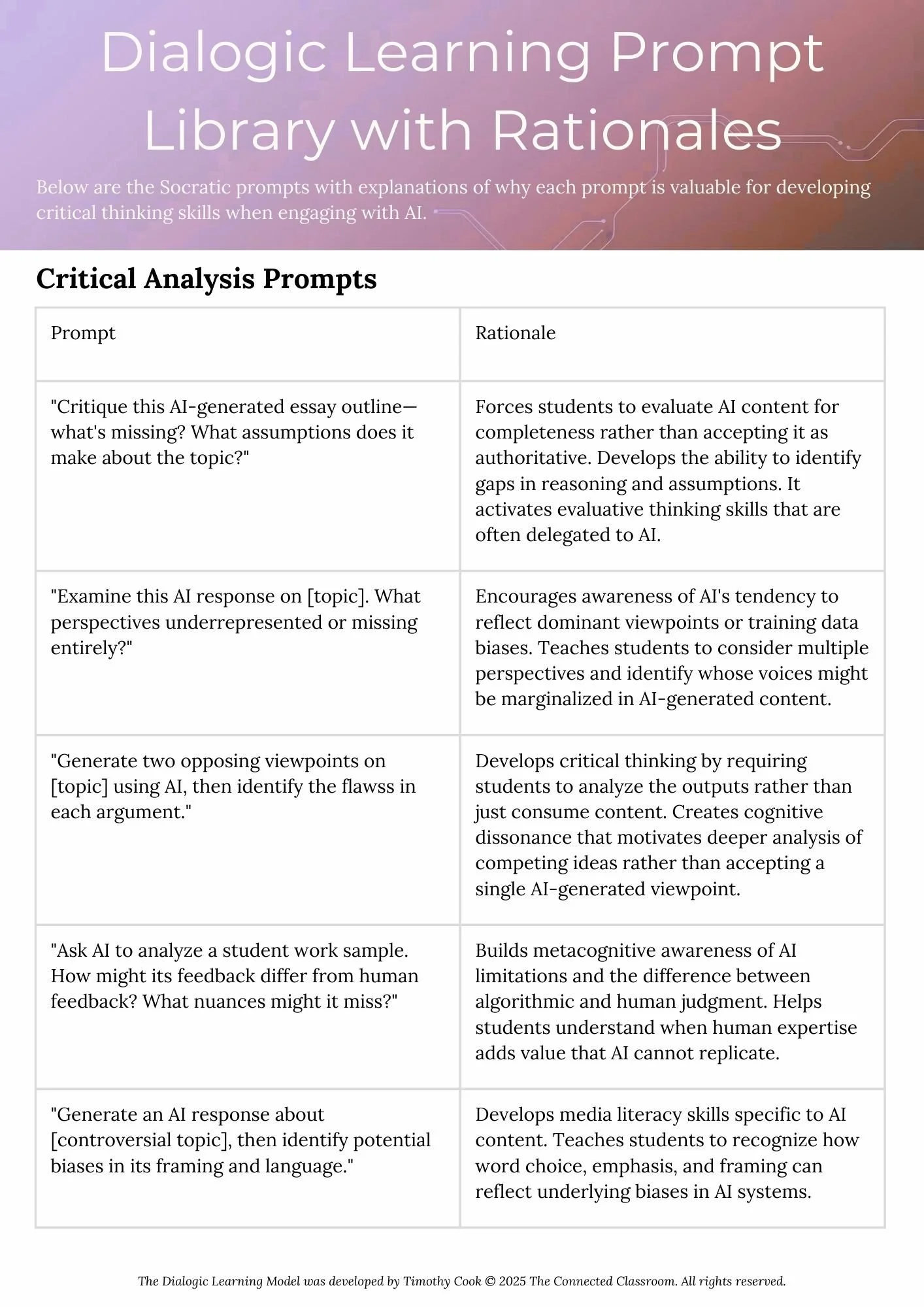
AI Competency for Educators
The UNESCO AI Competency Framework for Teachers (AICFT) and Connected Classroom’s free tools and resources provide a research-backed, ethical roadmap for integrating AI into teaching practices. Unlike generic AI prompt trainings, resources emphasize human-centered design, critical thinking, and student agency.
Explore our free resources below. All support human-centered principles and are built to support real institutional and classroom needs.
Connected Classroom® resources are independently developed and aligned to UNESCO’s AI Competency Framework for Students for educational purposes. Our products are not created by or affiliated with UNESCO, and alignment does not imply endorsement. Recognition from UNESCO does not grant rights to UNESCO’s intellectual property. All original content remains the property of Connected Classroom.
Both of the AICFTs are available publicly at UNESCO here. You can also downloaded the files directly by clicking on the frameworks above.
Why AI Competency Matters
The UNESCO AI Competency Framework for Teachers (AICFT) is a human-centered blueprint for preparing educators to lead in the age of AI.
It recognizes that:
Unlike many AI training programs that focus on technical skills alone, UNESCO’s framework ensures that AI enhances the irreplaceable role of teachers.
It includes five core competency aspects:
1. Human-Centered Mindset – AI serves people. People do not serve AI
2. Ethics of AI – Teaching students to interrogate bias, privacy, and accountability
3. AI Foundations – Understanding how AI works and where it falls short
4. AI Pedagogy – Using AI to deepen learning, not shortcut it
5. Professional Development – Building teacher capacity and reflective practice
These competencies are organized across three progression levels:
Acquire: Build foundational understanding
Deepen: Apply AI ethically in subject-specific contexts
Create: Innovate with AI to transform learning experiences
"The aim of using AI in education should move beyond merely providing access to information and standardized responses, toward inquiry enrichment, intellectual development and capacity empowerment."
This is The Connected Classroom AI Policy Audit Tool.
What Makes This Approach Different
Many AI trainings focus only on how to use tools, not on why, when, or whether we should.
Effective AI integration requires more than knowing how to prompt ChatGPT or analyze data. It demands:
A deep understanding of cognitive development
A commitment to student voice and verification
An awareness of algorithmic bias and ethical risks
A belief that teachers should lead AI integration
AI literacy should be about being human because it:
How This Benefits Students
When teachers understand AI through the lens of ethics, good teaching, and human-centered design, students benefit.
AI competent instruction means:
Students learn to question AI outputs instead of accept them
They’re taught to recognize bias, misinformation, and limitations
Lessons preserve space for critical thinking, creativity, and moral reasoning
AI becomes a collaborative tool, not a shortcut for thinking
AI literacy is not actually about making students good at using AI. It’s really about ensuring they remain thoughtful, curious, and human in school and professionally.
Download the free Dialogic Learning Prompts.
The Dialogic Learning Prompts are created and designed so that AI usage elicits higher order thinking skills in students.






